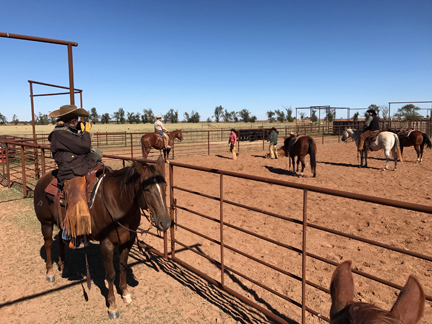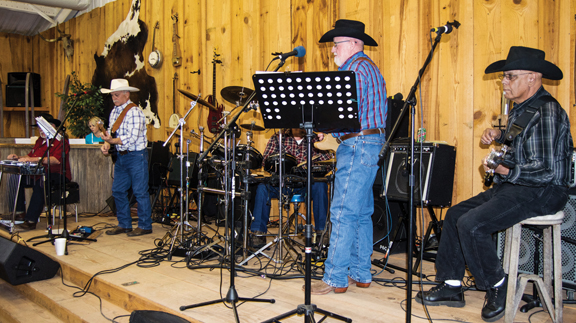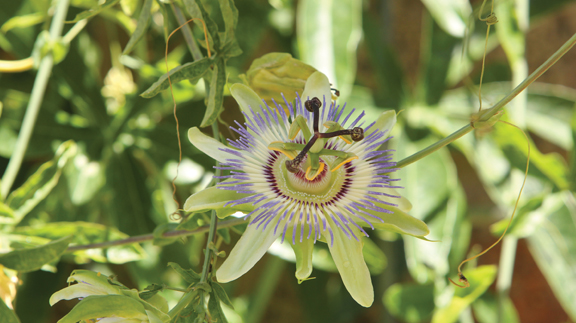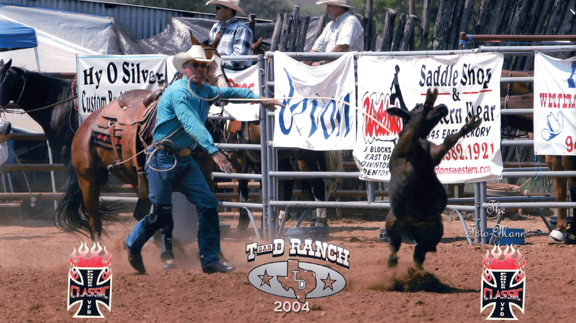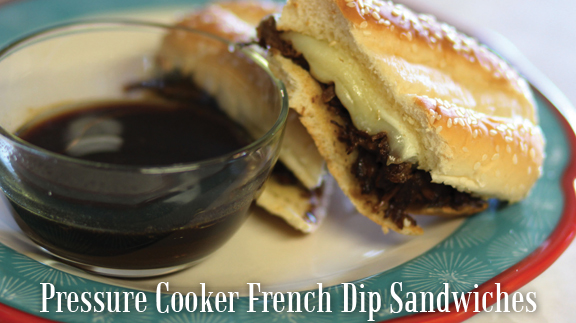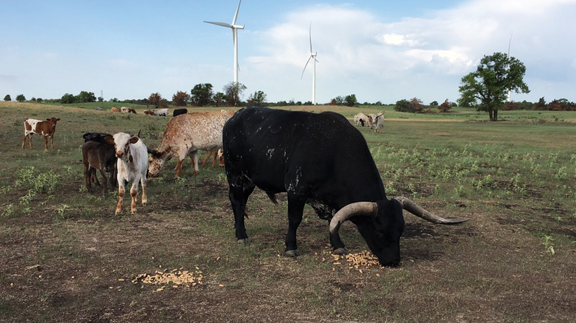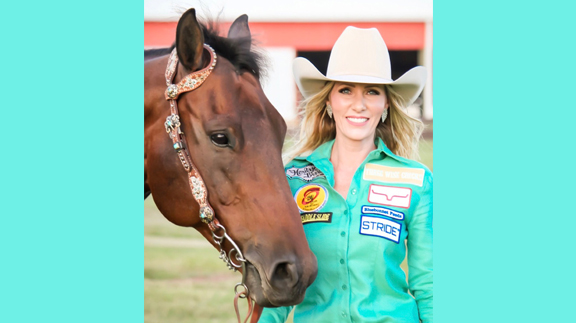Country Lifestyle
February 2018 Profile: Kathryn Leitner
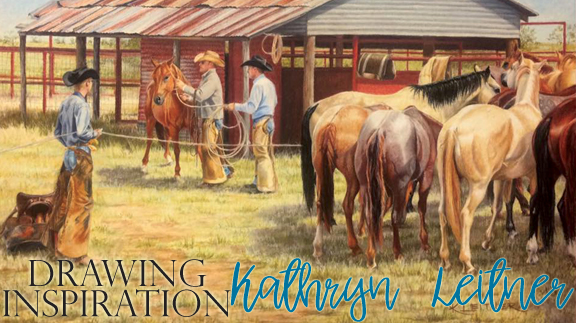
Drawing Inspiration
By Laci Jones
Grasping several colored pencils in her left hand and one bright orange pencil in her right hand, western artist Kathryn Leitner peered over her glasses at her latest work of art. Periodically glancing at the image of a horse displayed on the computer screen, the artist gracefully added another layer of color to the vibrant drawing in front of her.
Self-described as “realism,” Leitner’s art captures the western heritage by telling a story. However, her story began in eastern Montana on her grandparent’s ranch. The oldest of five children, Leitner stated her “rural roots” come from traditional ranching.
“We had chickens and a milk cow,” she added. “We had beef cattle and a little bit of hay. It was very traditional.”
All her siblings are artistic in some fashion, and Leitner is no exception. Leitner was first exposed to drawing at an early age. She recalled picking up pencil and sketchbook during her first-grade year, and her parents giving her “how to draw” books.
Two years later, the family moved from her grandparent’s ranch north of Winnett, Mont., to Lewistown, Mont. They later relocated to California during her freshman year of high school. While adjusting to the urban lifestyle was difficult for Leitner, experiencing a different culture had an impact on the young student.
“It was a culture shock, but I think you gain things from everywhere you are,” she explained. “We learned to be a lot more self-sufficient, strong and confident. You either decide you like it or you decide that you really appreciate where you came from, so it definitely made me appreciate my roots.”
Her family was supportive of her art, but the first teacher who encouraged her was her fifth-grade art teacher. Leitner developed her skill in high school art classes, describing the experience as “instrumental.” She learned different techniques, experimenting with mostly graphite. However, she also took a painting class using acrylic.
Leitner’s talents were not only with a pencil and paper; she also graduated from beauty school. In 1989, she moved with her grandmother, who relocated to western Oklahoma. The Montana native started working in a salon, and her son Justin was born in 1990. She met and married Jack Leitner three years later.
She opened her own salon at their home in 1994 west of Kingfisher, Okla. With the support of her family and the success of the beauty shop, Leitner was able to further her art. When she started her art, she initially struggled with the thought that it was a “selfish pursuit.”
“I thought you had to be famous to sell your art for a lot of money, and you really aren’t supposed to want fame,” Leitner explained. “I struggled with that, but I read a Max Lucado book called the ‘Cure for the Common Life: Living in your Sweet Spot.’ It talks about how God packs your gifts and he packs your bag and that’s what you’re supposed to use. They are your gifts; you’re not supposed to hide them.”
That book had an impact on Leitner, and she said things began to fall into place when she decided how to use her gift. She found her passion in drawing and painting the western heritage. She observed many ranchers in their everyday activities to help tell a story through her art.
“I really respect that lifestyle,” Leitner said. “It’s not easy ever, but it’s so rewarding. The chance to go out and ride with them, talk with them, spend the day with them, that’s how you’re able to tell their story.”
She works primarily from the photographs taken at different ranches including Tongue River Ranch. Leitner makes at least four trips each year to different ranches to take several thousand photos. The artist develops a relationship with all the cowboys who work on the ranches and their families.
“I always appreciate the opportunity to get material for my art,” she added. “It’s way more than that because you get to know those people, and you don’t always know how you’re going to be blessed by your gift. I can’t count the ways.”
The “beautiful opportunities” to use her gift are rewarding, but it is also a long process. From the time she takes the photos at the ranches to selling the finished art can take up to two years.
After returning from a trip, Leitner analyzes each photo and starts her sketch on vellum from several different photos. The variety of photos from the same moment helps the artist create the story she wants to tell. She has experimented with various mediums throughout her career.
“I mainly concentrated on graphite until my husband bought me a large set of colored pencils,” she chuckled. “I honestly had them nine months before I ever got the nerve to try them because it was intimidating. I always used just graphite—then all of a sudden I had all these colors.”
Leitner also began working with oils, learning from fellow artists.
“I took a class with Bob Faust from Okarche, Okla., who was giving art classes, and I started taking oil painting classes with him for quite a few years,” she explained.
The artist later took classes from Dennis Parker in Oklahoma City.
She also visited the National Cowboy & Western Heritage Museum in Oklahoma City, stating it was “the first exposure I really had to a lot of good art.” She garnered inspiration from these trips, and started participating in workshops with the featured artists including Carrie Ballantyne and Lisa Ann Watkins.
Leitner said she was inspired by watching Ballantyne because her portraits have a “feminine softness.” Watkins works with watercolor pencils, which inspired Leitner to attempt to use the medium. Leitner said watercolor pencils give the underlaying without the “graininess” of a colored pencil.
“I’ve used the watercolor pencils, but I haven’t added water to them,” she began. “I just used them in conjunction with my colored pencils. When you add the water to it, you lose a little bit of the control you have with the pencils being dry, then you have to go back over and add detail.”
Her initial watercolor pencil piece presented Leitner with a few shade challenges where she had to work to “get my lights to come back out.” Despite her initial intimidation, colored pencils are her favorite medium to work with.
“I always go back to the colored pencil because I like the detail,” the artist explained. “They challenge you a little bit more to get your values strong and your colors bright that somehow have a soft, gentle look when you’re finished. I like that.”
While the time dedicated to each piece varies, the artist said she averages 30 to 60 hours. However, Leitner said she was once hesitant to keep track of hours until she participated in a workshop with the president of the Traditional Cowboy Artists, Wilson Capron.
“He said, ‘If you really want this to be a business, you have to treat it like one,’” she recalled. “I really started being more dedicated.”
She logs her hours in a notebook, completing 12 to 18 pieces each year. This has helped her justify the pricing of each piece.
“You would think that seems like a lot of money, but I have 30, 40 or 60 hours invested in a piece,” she explained. “Some have taken two and a half weeks’ worth of work if you’re working a 40-hour week because of all the detail and all the figures.”
The artist said it was once difficult for her to stay motivated with her art. Leitner later realized staying motivated is easier with an organized workspace and structured lifestyle.
“Discipline is really important if you want to take this serious,” she added. “If I can get rid of my distractions, then it’s a part of my blessing that I get to do my art because when I’m doing it, I’m happy.”
To learn more about Kathryn Leitner and her art, pick up the February issue of OKFR!
Country Lifestyle
Poinsettia Partnerships Will Make Your Holidays Beautiful
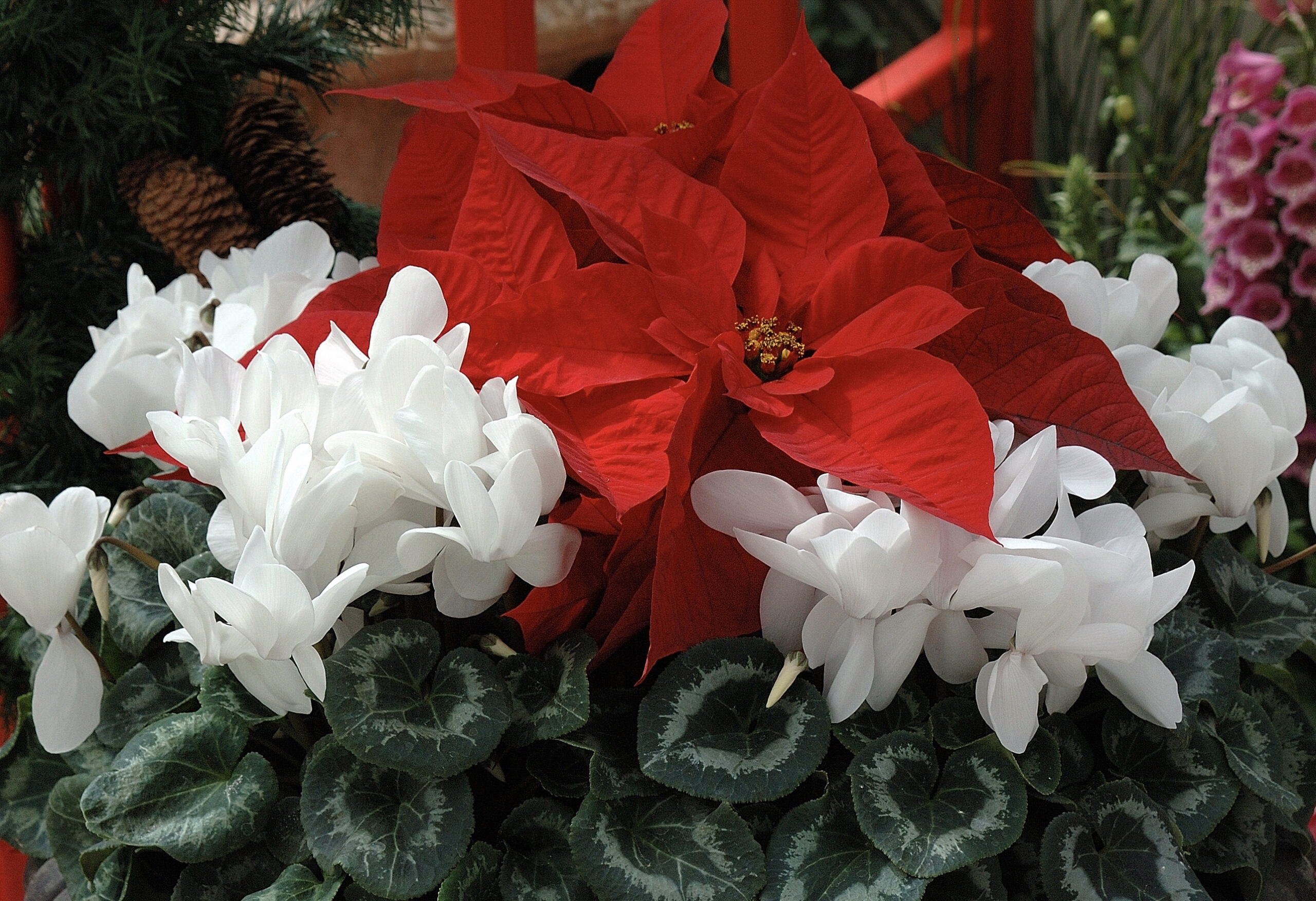
By
Norman Winter
Horticulturist, Author and Speaker
National Poinsettia Day just passed, December 12 to be exact. While I am sure the powers to be wanted a celebratory type day, from what I have been seeing this year is this may have been a deadline day. This most likely applies to poinsettia partners too! If you are asking what a poinsettia partner is then put on your thinking cap and gather around.
Proven Winners got most of us to thinking partners when they introduced the concept of combining poinsettias with Diamond Frost euphorbias. This is one of the best ideas ever and we now actually have three choices, Diamond Frost, Diamond Snow with double flowers and Diamond Mountain that is the taller of the three.
To a horticulturist like myself this combination is so special because both the Poinsettia and the Diamond Frost are Euphorbias. That’s right, they are cousins. Just like Christmas, families visiting and long-lost cousins getting together. Of course, the main reason we like this idea is that the red, pink, or variegated poinsettia looks incredible, it’s as though it is sitting on a bed of snow or frost. I have found these to be more available at fine florists.
But if you are going to create your own and go plant shopping then keep in mind some other options you might want to-try. For instance, a couple of years ago Jenny Simpson of Creekside Nursery in Dallas North Carolina introduced us to not only using caladiums at Christmas but even in combinations with poinsettias. She used the Heart to Heart White Snowdrift caladiums which turned out to be a perfect partner with red poinsettias.
My time as Executive Director at the Coastal Georgia Botanical Gardens in Savannah GA taught me there are opportunities for outside use with poinsettias, particularly if you are astute at long range weather forecasting. First consider that Savannah is technically zone 8B with a proclivity to lean into zone 9. We used poinsettias in large planters surrounded by Silver Bullet Dusty Miller or artemisia.
A similar application gave me the opportunity of photographing pink poinsettias mass planted in an atrium-like setting and surrounded by gray leaved Icicles helichrysum. But the most obvious and perhaps easiest if you are getting a late start is to combine your poinsettias with another Christmas plant like cyclamen. White cyclamen around a red poinsettia can be simply breathtaking.
This year I have also been watching what I call the professional garden club ladies walking out of both florists and floral departments with holly berries. We all think of hollies on swags above the fireplace or front door, but two or three preserved branches loaded with red berries stuck in a pot of white poinsettias is quick, easy and unbeatable.
Red berries for Christmas, landscape beauty, and of course feeding the birds is a prime reason to grow winterberry hollies like the compact Berry Poppins. Consider also growing Berry Heavy Gold winterberry holly. Cutting branches of the gold berries to be used with red poinsettias makes a stunning partnership. Go to Proven Winners site, Winterberry Holly: The Ultimate Guide to Getting Colorful Berries. If you don’t have poinsettias yet make today your shopping day! Follow me on Facebook @NormanWinterTheGardenGuy for more photos and garden inspiration.
Country Lifestyle
Homesteading Skills: The Essentials for Self-Sufficiency and Sustainable Living
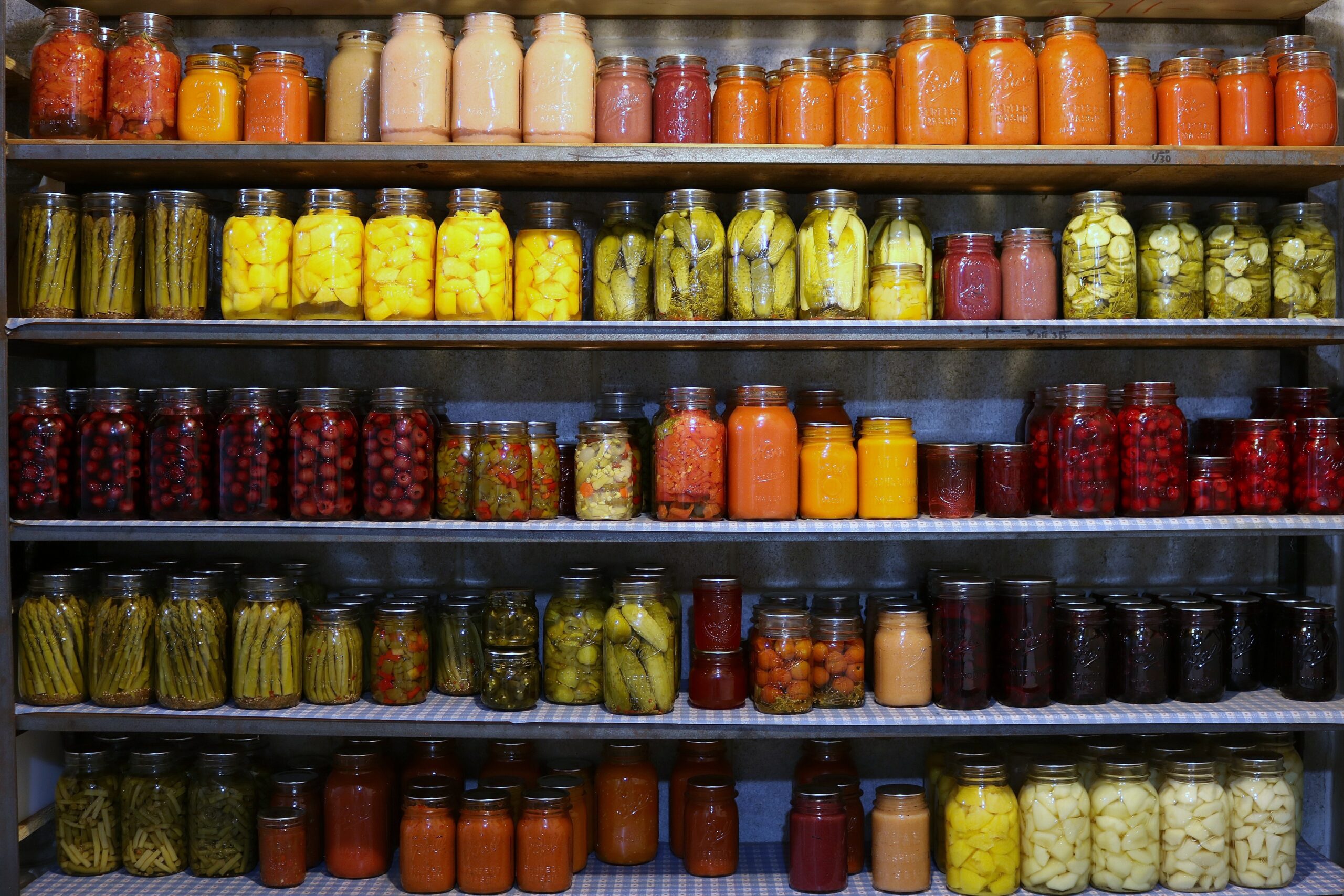
Homesteading, once a way of life for our ancestors, is experiencing a resurgence in today’s world. As people seek greater self-sufficiency, a deeper connection with the land, and more sustainable lifestyles, homesteading skills have become not only practical but also deeply rewarding. In this article, we’ll explore the essential homesteading skills that can empower individuals and families to live more self-reliant and sustainable lives.
1. Gardening
At the heart of homesteading is the ability to grow your own food. Gardening is the foundation of self-sufficiency, and it’s a skill that can be cultivated no matter the size of your property. Key gardening skills include:
Soil preparation and composting
Seed starting and transplanting
Crop rotation and companion planting
Pest and weed management
Harvesting and food preservation techniques like canning, freezing, and drying
2. Animal Husbandry
Raising animals for food, fiber, and companionship is a fundamental aspect of homesteading. The skills related to animal husbandry include:
Care and feeding of livestock, such as chickens, goats, cows, or pigs
Breeding and reproduction management
Livestock housing and pasture management
Animal health and basic veterinary care
Dairy and meat processing if you’re raising animals for consumption
3. Food Preservation
To make the most of your garden’s bounty or the harvest from your livestock, knowing how to preserve food is essential. Food preservation skills include:
Canning fruits and vegetables
Fermentation for foods like sauerkraut and kimchi
Dehydrating fruits, vegetables, and herbs
Making homemade jams, jellies, and pickles
Smoking, curing, and other methods for meat preservation
4. Foraging and Wildcrafting
Homesteading often involves making the most of what nature provides. Learning to identify and use wild edibles and medicinals is a valuable skill:
Identifying edible wild plants and mushrooms
Harvesting herbs for teas, tinctures, and salves
Sustainable foraging practices to protect local ecosystems
Preserving wildcrafted items for later use
5. Beekeeping
Keeping bees not only provides a source of honey but also contributes to pollination on your property. Beekeeping skills include:
Setting up and maintaining beehives
Handling and managing bees safely
Harvesting and processing honey and beeswax
Identifying and addressing common bee health issues
6. Food Self-Sufficiency
Beyond gardening, you can work toward greater food self-sufficiency by learning skills like:
Seed saving to preserve heirloom and open-pollinated varieties
Raising and harvesting small livestock like rabbits or quail
Cultivating perennial food crops like fruit trees and berry bushes
Aquaponics or hydroponics for year-round food production
7. Basic Carpentry and DIY Skills
Homesteaders often find themselves needing to build and repair structures, tools, and equipment. Carpentry and DIY skills include:
Building raised beds, chicken coops, and animal shelters
Basic woodworking for constructing furniture and farm implements
Repairing and maintaining machinery like tractors and generators
Fencing and infrastructure construction for property management
8. Water Management
Managing water resources efficiently is crucial for sustainable living. Key skills include:
Rainwater harvesting and storage
Drip irrigation and water-saving techniques for gardening
Proper well maintenance and water testing
Building and maintaining ponds or water features for livestock and wildlife
9. Energy Independence
To live off the grid or reduce your environmental footprint, consider energy independence skills:
Solar panel installation and maintenance
Wind turbine installation and maintenance
Energy-efficient building design and retrofits
Off-grid living strategies for reduced reliance on public utilities
10. Soap and Candle Making
Homemade soaps and candles can reduce reliance on store-bought products. These skills include:
Making soap using cold or hot process methods
Crafting candles from beeswax, soy, or other materials
Adding scents and colors naturally
11. Herbal Medicine and Remedies
Homesteaders often turn to herbal medicine and remedies for self-sufficiency in healthcare:
Growing and harvesting medicinal herbs
Making tinctures, salves, and herbal teas
Natural remedies for common ailments
Basic first-aid and emergency care skills
12. Sewing and Textile Arts
Basic sewing skills are essential for making and repairing clothing, linens, and more. These skills include:
Hand and machine sewing techniques
Mending and darning clothing
Knitting, crocheting, and other textile arts
Crafting items like blankets, rugs, and quilts
Homesteading is not just a return to simpler times but a way to embrace self-sufficiency, sustainability, and a deeper connection with the land. While mastering all these skills may take time, the journey itself is a rich and rewarding experience. Homesteading is about learning, adapting, and continually improving your ability to live more independently and in harmony with the environment. Whether you have acres of land or a small urban plot, these essential homesteading skills can empower you to live a more self-reliant and sustainable life, fostering a sense of fulfillment and purpose in the process.
Country Lifestyle
Raising Chickens for Beginners: A Step-by-Step Guide
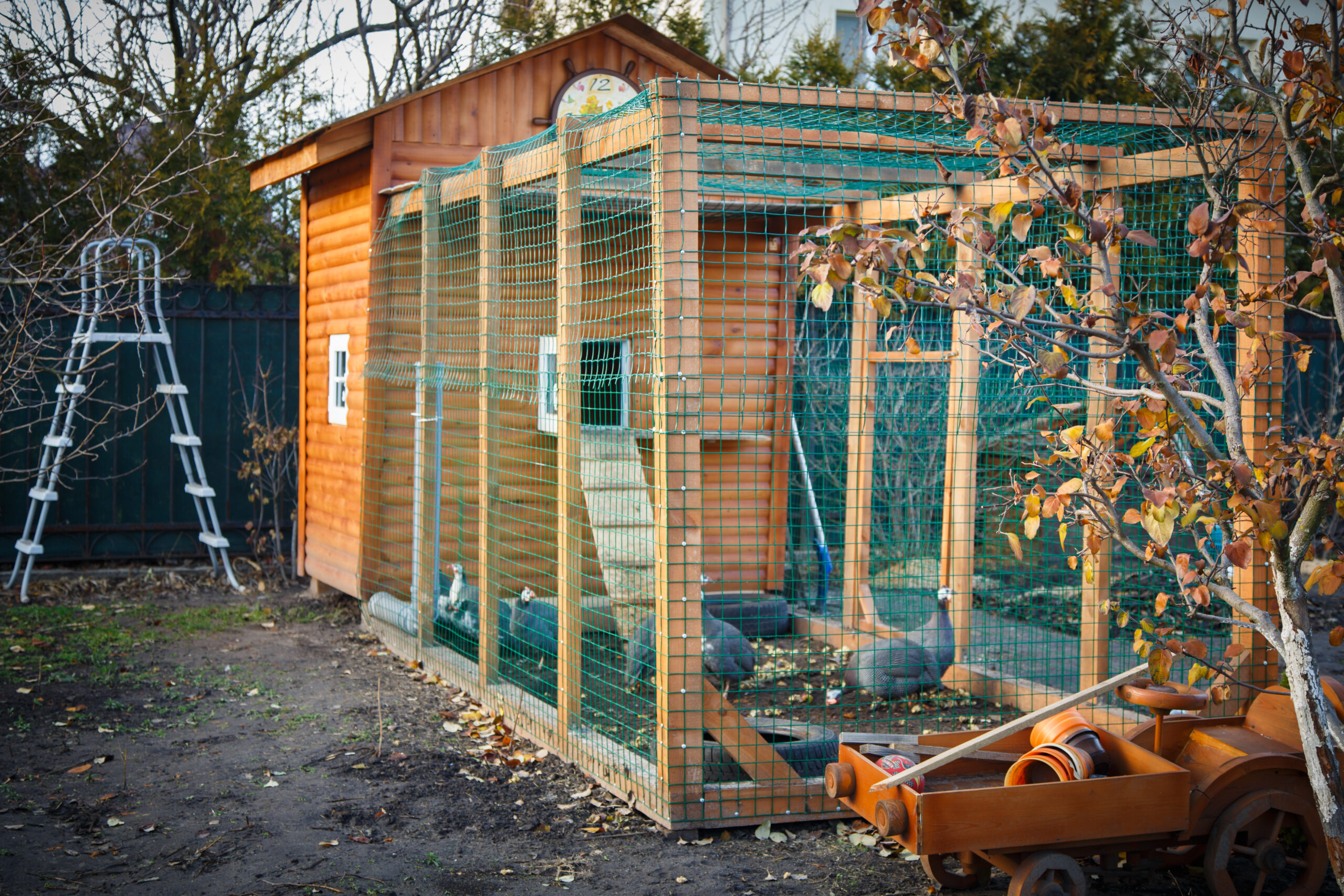
Raising chickens can be a rewarding and fulfilling experience, whether you’re a homesteader looking to become more self-sufficient or a backyard enthusiast seeking fresh eggs for your family. Chickens are relatively low-maintenance animals, making them an excellent choice for beginners in the world of poultry farming. In this step-by-step guide, we will walk you through the essentials of raising chickens, from choosing the right breed to ensuring their health and happiness.
Selecting the Right Breed
Before diving into chicken-raising, it’s crucial to choose the right breed that suits your goals and environment. Different breeds have various characteristics, including egg-laying capacity, temperament, and adaptability. Here are some popular options for beginners:
Rhode Island Red: Known for their excellent egg production and hardiness.
Plymouth Rock: Friendly birds that lay brown eggs and adapt well to various climates.
Australorp: Record-holders for egg-laying, known for their docile nature.
Silkies: Unique and fluffy birds often kept as pets; they lay smaller eggs but are adorable companions.
Research the specific breeds available in your area and consider factors like climate and available space when making your selection.
Coop and Run Setup
Before bringing your chickens home, you’ll need to set up a safe and comfortable living space for them. A coop and run are essential components of your chicken-keeping setup:
Coop: The coop is where your chickens will sleep at night and lay their eggs. It should be well-insulated, predator-proof, and provide at least two to three square feet of space per chicken.
Run: The run is an outdoor area where your chickens can roam during the day. It should be fenced and covered to protect your birds from predators and provide shade.
Make sure to include roosting bars, nesting boxes, and adequate ventilation in your coop for a healthy environment.
Feeding Your Chickens
Chickens need a balanced diet to stay healthy and lay eggs regularly. You can feed them commercial chicken feed, which comes in various forms:
Starter Feed: For chicks up to six weeks old.
Grower Feed: For chicks aged six weeks to 20 weeks.
Layer Feed: For hens producing eggs.
Additionally, you can supplement their diet with kitchen scraps, vegetables, and grains. Ensure they have access to clean, fresh water at all times.
Care and Health
Regular care and monitoring are essential to keeping your chickens healthy. Here are some key aspects of chicken care:
Regular Health Checks: Inspect your chickens for signs of illness or injury daily. Common issues include mites, respiratory infections, and injuries from pecking.
Disease Prevention: Vaccinate your chickens against common diseases to keep your flock healthy.
Egg Collection: Collect eggs daily to ensure they remain clean and prevent hens from brooding.
Clean Coop: Regularly clean the coop to prevent the buildup of waste and odors, which can attract pests.
Handling and Socializing
Chickens can be friendly and enjoy human interaction when handled gently. Spend time with your chickens, hand-feeding them treats to build trust. Avoid sudden movements or loud noises, which can startle them.
Understanding Egg Production
Egg production varies by breed and age. Hens typically start laying eggs at around 5-6 months old. The amount of daylight, diet, and stress can affect egg production. You can use artificial lighting to simulate longer daylight hours, which can encourage consistent egg-laying.
Dealing with Challenges
Chickens, like any animal, come with their challenges. Here are a few common issues and how to address them:
Predators: Invest in a secure coop and run, and consider adding motion-activated lights or alarms to deter nighttime predators.
Broodiness: Some hens may become broody and stop laying eggs. You can break this behavior by isolating them in a separate enclosure or providing them with dummy eggs to sit on.
Feather Pecking: Chickens can sometimes develop a habit of pecking at each other’s feathers. Ensure they have enough space and distractions to prevent this behavior.
Raising chickens can be a delightful and educational journey. By selecting the right breed, setting up a proper coop and run, providing a balanced diet, and offering care and attention, you can enjoy the rewards of fresh eggs and the companionship of these feathered friends. Remember that every chicken has its unique personality, so get ready to be charmed by your new flock as you embark on this fulfilling adventure in poultry farming. Happy chicken-keeping!
-

 Country Lifestyle7 years ago
Country Lifestyle7 years agoJuly 2017 Profile: J.W. Hart
-

 Outdoors6 years ago
Outdoors6 years agoGrazing Oklahoma: Honey Locust
-

 Country Lifestyle2 years ago
Country Lifestyle2 years agoThe Two Sides of Colten Jesse
-

 Attractions7 years ago
Attractions7 years ago48 Hours in Atoka Remembered
-

 Farm & Ranch5 years ago
Farm & Ranch5 years agoHackberry (Celtis spp.)
-

 Outdoors4 years ago
Outdoors4 years agoPecan Production Information: Online Resources for Growers
-

 Equine6 years ago
Equine6 years agoUmbilical Hernia
-

 Country Lifestyle1 year ago
Country Lifestyle1 year agoSay Yes!


